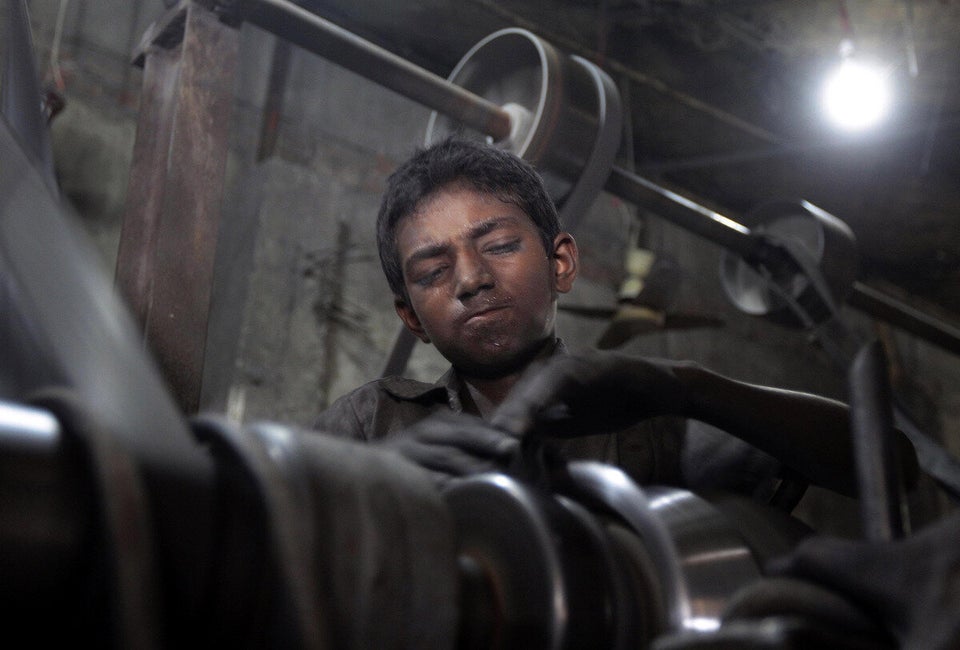
Coltan (used in cell phones) and gold are just two of the raw materials mined by children in Africa, and used in products for sale in Canadian stores.
If you visit the websites of companies doing business in Canada, you'll see the many incredible products available for sale. You'll discover how they'll look, feel and function, and change your life for better. What you won't learn, in most cases, is whether children were abused or exploited to create these products for you. For in most cases, the companies themselves don't know the answer.
As Retail Council of Canada (RCC) members gather in Toronto this week, there's no workshop on the agenda to help retailers understand the various links in their own global supply chains. A clothing company may do a good job of ensuring that no children are employed in the factories where its products are sewn together. But who wove the cotton into fabric to make those T-shirts? Who laboured on the cotton plantation where it was grown?
Today's products come to you courtesy of a whole string of contractors and subcontractors, each with different employment and safety standards. Moving down the supply chain, you often find children forced to work in brutal, dangerous conditions for very little pay. Hours are so long that many have no chance to continue in school, relegating them to lifetimes of low-paid labour.
Invisible workers
It's true that families in developing countries often need children to work outside the home, just to put food on the table. But since our own Canadian retailers know so little about who is cutting, mining or harvesting the raw materials for our products, they have trouble enforcing their own high safety standards all the way along those complex global supply chains.
We at World Vision have seen Canadians' surprise and concern as they discover that a retailer they've supported for years is somehow linked to child labour. Last year's horrific garment factory collapse in Bangladesh brought the issue to the forefront, as many of the workers toiling under dangerous, exploitative conditions were making products destined for Canadian retailers. In a recent Ipsos Reid survey, 70 per cent of Canadians expressed concern that the products they purchase might be made in unsafe buildings. Yet once again, it's difficult for any Canadian retailer to promise that this wasn't the case.
Lack of information
It's very difficult for Canadian retailers to answer questions from their customers about child labour -- especially as awareness the issue increases among shoppers. In the same survey, more than 60 per cent of Canadians said they've changed their shopping behaviour by being more attentive to the products they purchase, either by reading labels, writing letters to companies, or even boycotting companies they believe are associated with exploitative child labour.
This can't be good for Canadian retailers, many of whom have very strong corporate social responsibility standards themselves. Trust is critical, especially when it comes to shoppers who are feeding their families or clothing their children. I have stood at the clothing racks myself, battling with the question of whether the pants I'm about to buy for my kids were made by children half their age. I've debated over frozen shrimp for a stir-fry, wondering whether a little girl had worked long into the night to make her daily processing quota. Maybe an adolescent boy was kept at sea for years at a time to haul shrimp from the water at gunpoint. Even a 'Product of Canada' label can mean very little, as this can refer to processing and packaging only.
Opportunity for change
The RCC and other retail organizations need to play a role in encouraging retailers to examine their supply chains. They can help consumers to access information more easily about where and how products are made. The chocolate industry is a good example of how this can work. The World Cocoa Foundation is playing a critical role in helping companies do business while doing the right thing, as a key facilitator of discussions about hazardous child labour on cocoa plantations.
No one is pretending that conversation can lead to overnight change. As things stand now, 95 per cent of the world's chocolate is not certified as ethical. But with the help of the World Cocoa Foundation and other industry organizations, there's a plan in place to reduce the worst forms of child labour in the coca producing areas of two key African countries by up to 70 per cent by 2020.
It's not up to the RCC alone to help protect children from labour exploitation. But as the chocolate industry has shown, strong, centralized industry bodies can provide critical help to retailers as they chart important new territory. For the sake of Canadian shoppers, Canadian retailers, and children all over the world, this issue needs to be on the RCC's radar immediately and on their meeting agenda next year.
Please visit No Child for Sale to learn more.
ALSO ON HUFFPOST:
